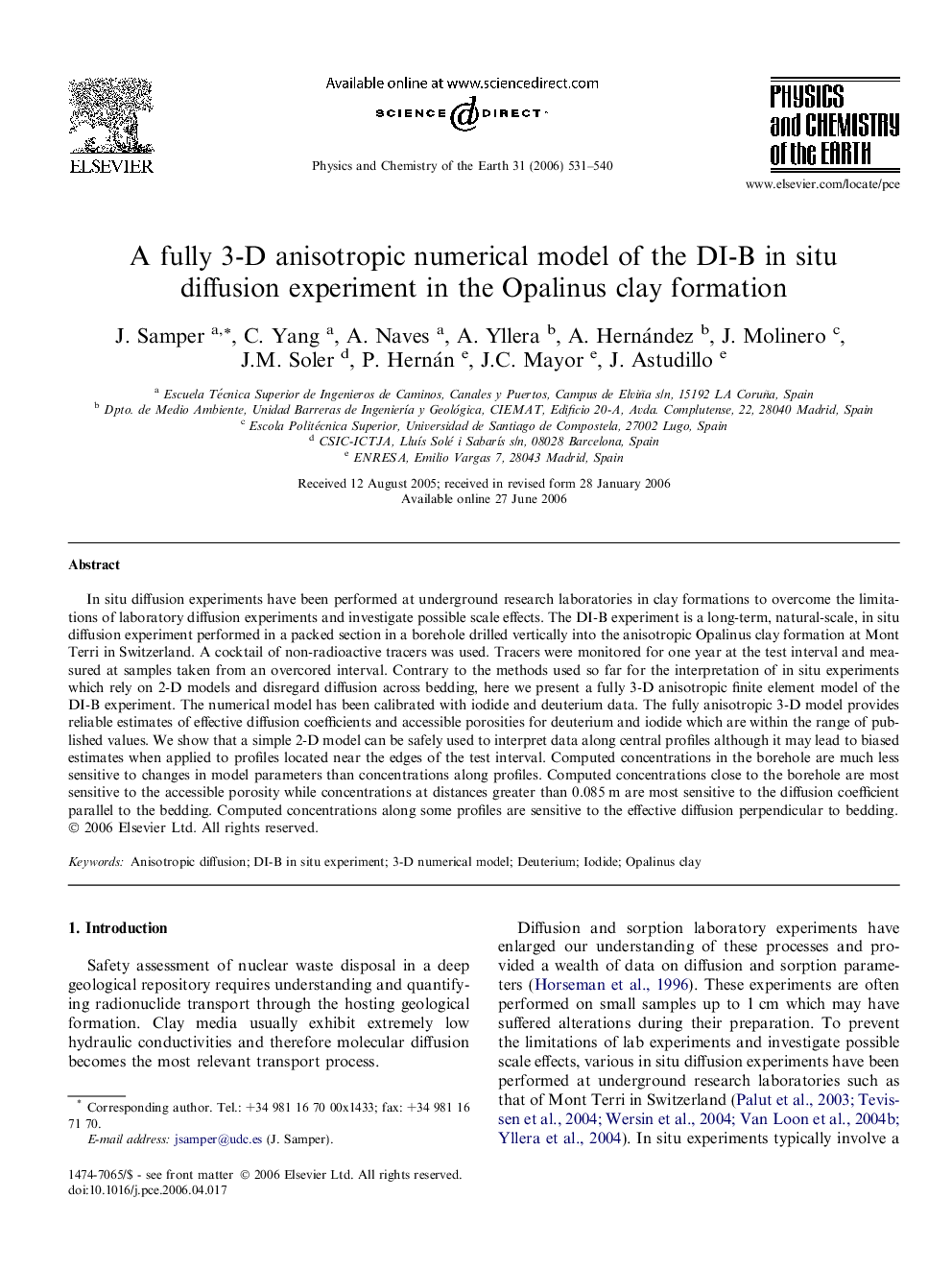| Article ID | Journal | Published Year | Pages | File Type |
|---|---|---|---|---|
| 4722084 | Physics and Chemistry of the Earth, Parts A/B/C | 2006 | 10 Pages |
Abstract
In situ diffusion experiments have been performed at underground research laboratories in clay formations to overcome the limitations of laboratory diffusion experiments and investigate possible scale effects. The DI-B experiment is a long-term, natural-scale, in situ diffusion experiment performed in a packed section in a borehole drilled vertically into the anisotropic Opalinus clay formation at Mont Terri in Switzerland. A cocktail of non-radioactive tracers was used. Tracers were monitored for one year at the test interval and measured at samples taken from an overcored interval. Contrary to the methods used so far for the interpretation of in situ experiments which rely on 2-D models and disregard diffusion across bedding, here we present a fully 3-D anisotropic finite element model of the DI-B experiment. The numerical model has been calibrated with iodide and deuterium data. The fully anisotropic 3-D model provides reliable estimates of effective diffusion coefficients and accessible porosities for deuterium and iodide which are within the range of published values. We show that a simple 2-D model can be safely used to interpret data along central profiles although it may lead to biased estimates when applied to profiles located near the edges of the test interval. Computed concentrations in the borehole are much less sensitive to changes in model parameters than concentrations along profiles. Computed concentrations close to the borehole are most sensitive to the accessible porosity while concentrations at distances greater than 0.085Â m are most sensitive to the diffusion coefficient parallel to the bedding. Computed concentrations along some profiles are sensitive to the effective diffusion perpendicular to bedding.
Related Topics
Physical Sciences and Engineering
Earth and Planetary Sciences
Geochemistry and Petrology
Authors
J. Samper, C. Yang, A. Naves, A. Yllera, A. Hernández, J. Molinero, J.M. Soler, P. Hernán, J.C. Mayor, J. Astudillo,
